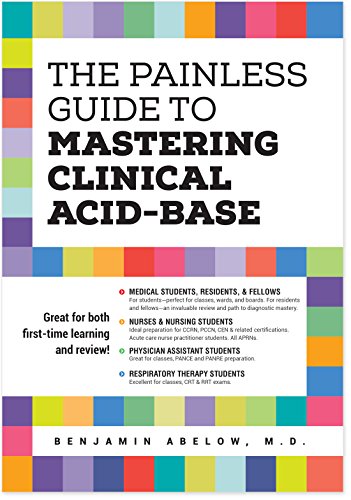The Painless Guide to Mastering Clinical Acid-Base (2017) is a 180-page introductory acid-base biochemistry book. The book is very clear and well written and hits on all the major aspects of acid base disorders in the context of their underlying biochemistry and pathophysiology.

For example, the biochemistry of ketoacidosis is discussed in fine, precise and economical detail:
The term ketoacid refers to two related 4-carbon organic acids: acetoacetic acid and beta-hydroxybutyric acid…. Low insulin causes fat cells to release fatty acides into the blood, which flood the liver. High glucagon causes liver cells to metabolize these fatty acids via a ketogenic (ketone-producing) biochemical pathway…. Other counter-regulatory hormones also exist (e.g., epinephrin, cortisol), and high levels of these can sometimes contribute to ketoacidosis as well.
The Painless Guide to Mastering Clinical Acid-Base (2017), page 73
While the book provides a solid overview of the relevant biochemistry, and even signs and symptoms on occasion, the scenarios seldom congeal into realistic clinical micro-vignettes. This might leave readers wondering what the actual clinical presentations might be. So perhaps future editions can fix this by adding clinical microvignettes. For example, a micro-vignette for a a patient with diabetic ketoacidosis might be:
- An adolescent patient who presents with complaints of polyuria and polydipsia.
- Physical examination shows dry mucus membranes and tachycardia. Serum chemistries show low bicarbonate with borderline potassium level, etc.
- Arterial blood gas shows low pH and low PCO2 and low HCO3.
After that, the clinical and laboratory findings can be explained in terms of the underlying biochemistry and pathophysiology noted above. The addition of these types of vignettes would add a hundred pages or so to this book, but it would be worth it in terms of added market share, as well as benefit to learners.
As it stands, The Painless Guide to Mastering Clinical Acid-Base (2017) is more detailed and clinically-relevant compared to what you’ve learned in a general chemistry pre-med course. However, it’s still less detailed than everything you will ultimately need to know for clinical practice. As such, The Painless Guide to Mastering Clinical Acid-Base (2017) could be regarded as a segue or introductory book to Acid Base Case Studies (2004), which I reviewed elsewhere.
Either way, I recommend this book very highly as is, especially to medical students. It is the best book to help medical students along on their path to excellence in acid-base management.


Leave a Reply